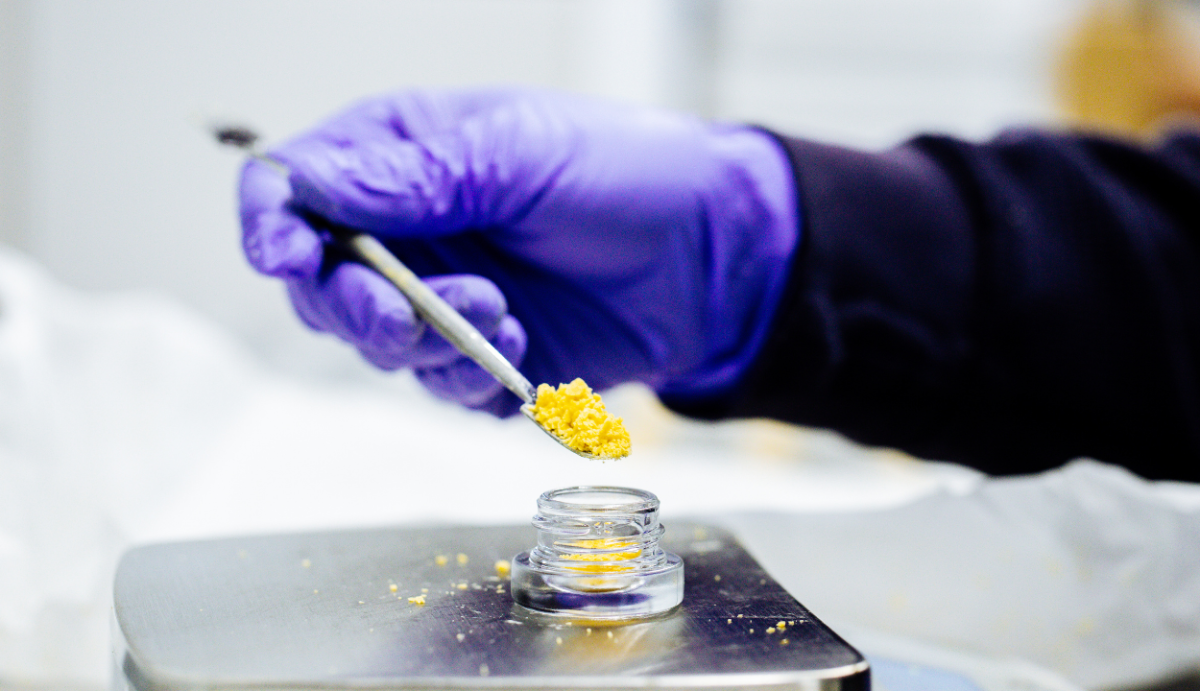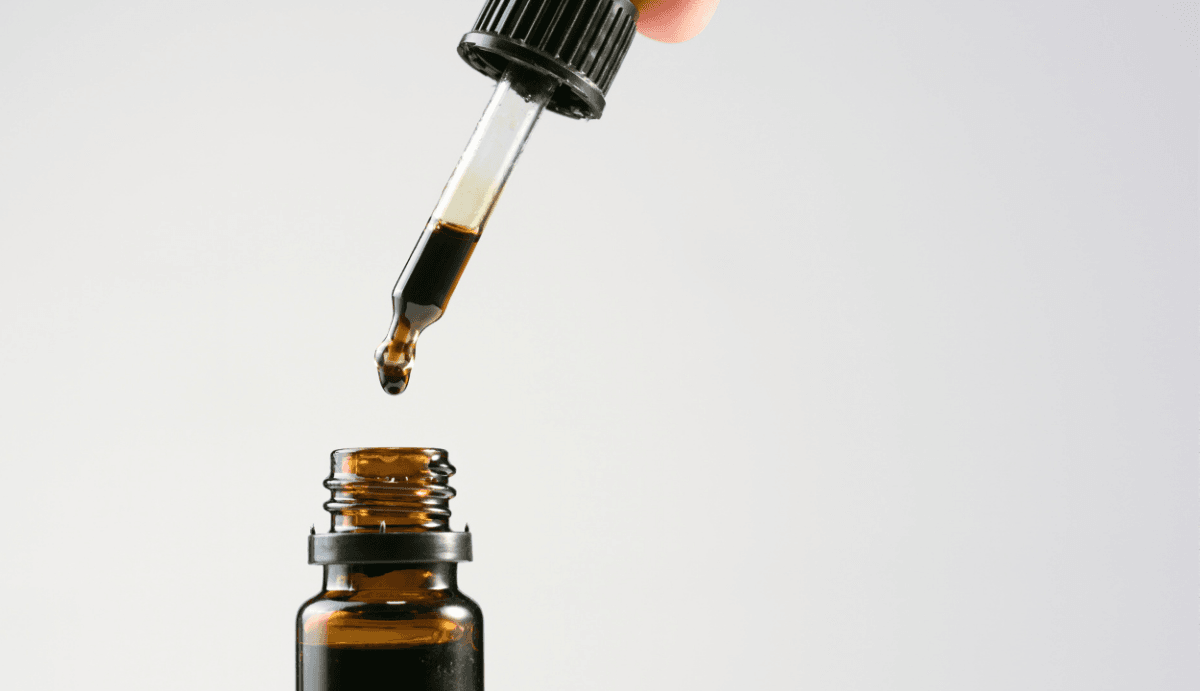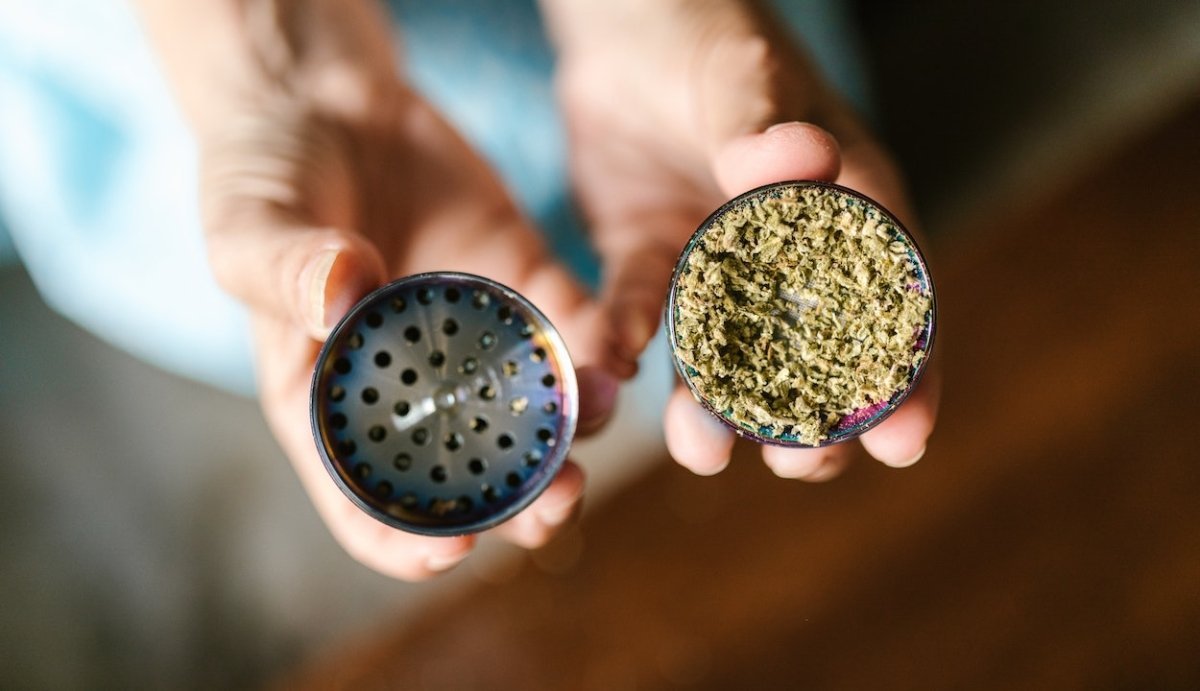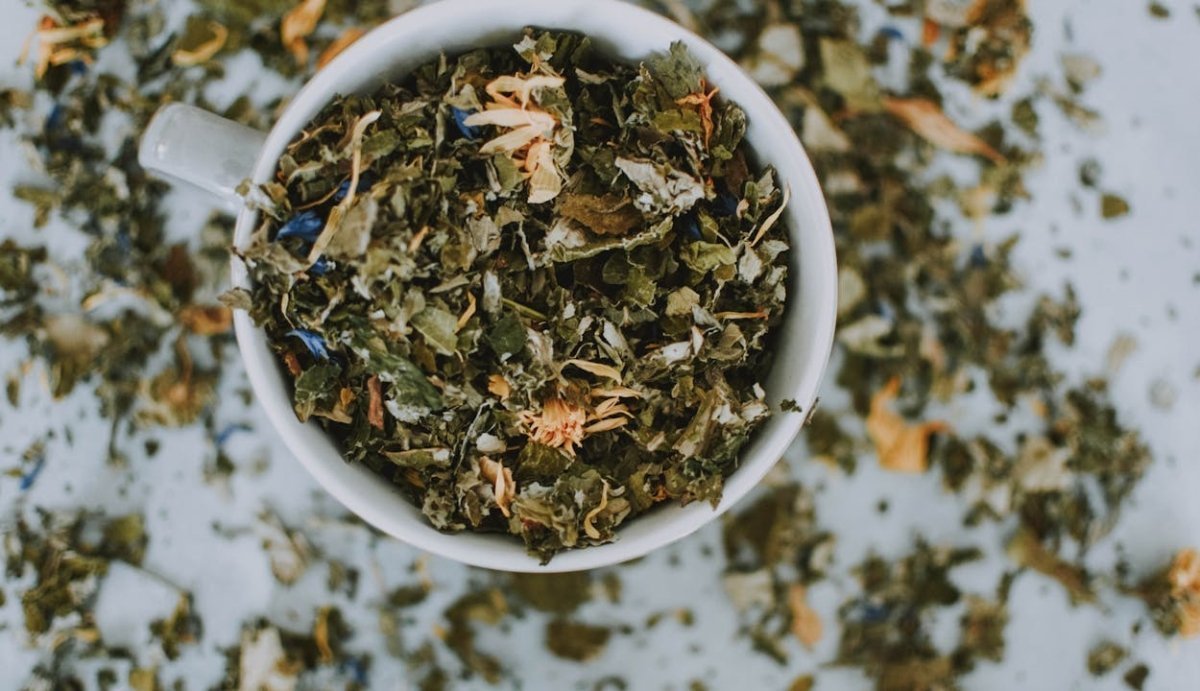Your Cart is Empty
FREE SHIPPING ON ALL ORDERS $75+
The way that Delta-8-THC is made has everything to do with whether it’s legal, safe, and effective. Unfortunately, not every company is willing to expose the gritty details behind their manufacturing process, but we’re going to break it down.
So, how is Delta-8-THC extracted so that it’s legal? And why does the Delta-8-THC extraction process matter so much?
Here’s what you need to know:
Delta-8 Extraction Table of Contents
Sourcing Delta-8-THC
The Delta-8-THC Extraction Process
Converting CBD to Delta-8-THC
Does Delta-8 Extract Contain Delta-9-THC?
Is Delta-8-THC Legal?
Resources
Here's a simple step-by-step list to explain how Delta-8 is made:
Want the inside scoop? Let's take a deeper look at how Delta 8 is made from start to finish:
Before we can answer questions about Delta-8-THC extraction, we need to discuss where Delta-8 actually comes from:

Delta-8 is a natural cannabinoid found in almost all varieties of cannabis, including hemp. Manufacturing Delta-8 from hemp material makes it legal and accessible by federal law, so the majority of Delta-8 on the market is hemp-derived.
Hemp contains CBGA, a cannabinoid acid that’s known as “the mother of all cannabinoids,” which becomes THCA, which becomes Delta-9-THC through a process called decarboxylation, or a precise amount of heat exposure.
Delta-8-THC is a degraded version of Delta-9 that’s created when oxidation happens. This may be the reason that Delta-8 is thought to be less potent than Delta-9, and the reason that it doesn’t degrade quickly when exposed to air, giving it a long shelf life.
Since Delta-8 is a product of Delta-9 degradation, it’s safe to assume that it’s available only in low quantities, especially in legal hemp material (which must contain less than 0.3% Delta-9-THC by law). In fact, Delta-8 is usually found in quantities lower than 1%.
Originally, this posed an issue for the researchers who discovered Delta-8-THC, especially after cannabis was made illegal in 1970.
That is until one prominent cannabinoid researcher, Raphael Mechoulam, discovered that Delta-8-THC existed as a CBD isomer, meaning the CBD molecule could be rearranged to create Delta-8-THC. Mechoulam filed for a patent in the early 2000’s that detailed a method for converting CBD into Delta-8-THC.
Delta-8-THC extraction relies on this "isomerization process," but what does that mean?
An "isomer" is the terminology used to describe two compounds that have the same components, just in a different order. In other words, CBD contains everything needed to become Delta-8, it just needs to be rearranged.
CBD (cannabidiol) is available in abundance in hemp material that is federally legal and accessible. Extracting cannabidiol is the first step to making many of the Delta-8-THC products on the market today.
Before Delta-8-THC can be made, CBD needs to be extracted from legal hemp material, usually using hemp flowers or hemp biomass (meaning the entire hemp plant). There are a variety of different methods that can be used for extracting Delta-8, but they all share a similar first step: Decarboxylation.
The decarboxylation process, commonly called “decarbing,” involves heating the hemp material to precise temperatures. Heat converts CBDa to CBD, which helps boost the potency of the extracted material.
After the material has been decarbed, one (or a combination) of various methods can be used to remove the CBD material from the dried plant material.
The methods used to make CBD products vary greatly, but they boil down to three popular, basic methods: solvent-based extraction, solventless extractions, and oil extractions.
These extractions, like Supercritical CO2 extractions or high-performance liquid chromatography, use no solvent. Instead, they require special equipment but are frequently described as “cleaner,” because no solvent can be left behind.
This method, like the infamous ethanol wash, requires a solvent. Ethanol breaks down and extracts the hemp material, and then some extra steps are required to remove leftover solvent from the extracted material.
This is the oldest method, which involves using an oil base, like olive oil, and gently heating it to remove the cannabinoid material. This is similar to the way you make cannabis butter at home.
(Read Hemp and CBD Extraction Methods to learn more about the various techniques and how they differ.)
After the CBD material is extracted, it is carefully refined (through methods like winterization and distillation) to create CBD isolate. CBD isolate, a form of CBD that is 99% pure, is the material that is most frequently used to make Delta-8-THC products in the U.S.

Once the CBD isolate material is ready, it needs to be transformed into Delta-8-THC through a process called “isomerization.”
More specifically, CBD has to be dissolved in a certain acid, most commonly glacial acetic acid. This chemical process first converts some of the CBD to Delta-9-THC, but after 72 hours over half of the original CBD material will become Delta-8-THC.
Finally, the material is carefully refined once more to remove any unwanted materials, like leftover acids, to create a pure and potent Delta-8-THC oil. This material can be used to make the wide variety of Delta-8 products you’ll find on the market today.
In some cases, the Delta-8 extract is used as-is, or it may be mixed with various carrier oils, terpenes, cannabinoids, or flavor additives to create a Delta-8 product that is entirely unique.
Regardless of whether the material is used to make vaporizers or edibles or something in between, a good manufacturer will also use a batch-testing process to verify potency and safety.
Although Delta-8-THC is a natural cannabinoid, there are various things that could go wrong during the isomerization process that would result in low Delta-8 concentrations. For that reason, third-party lab tests are used to hold a manufacturer accountable, prove label accuracy, and otherwise mark a Delta-8 product as honest and legitimate.
Usually, Delta-8 is made from a CBD-rich extract and the final product will contain no Delta-9-THC. In some cases, a full-spectrum product may contain trace amounts of Delta-9. Hemp products can legally contain up to 0.3% Delta-9-THC, but these trace amounts aren't enough to impact the effects of Delta-8 products.

Since Delta-8-THC can be made through various methods, consumers must be careful to ensure that the Delta-8-THC they buy is made through legal manufacturing techniques.
In most cases, that means that the Delta-8 must be hemp-derived and made according to the hemp agriculture standards in the state where it was manufactured. Delta 8 that is made from federally legal hemp generally has the same legal status.
Keep in mind that Delta-8 laws vary by state. Read "Where is Delta-8-THC Legal?" for more information about your local Delta 8 laws.
At Vida Optima, all of our Delta-8-THC products are 100% Farm Bill compliant and are accompanied by lab tests that prove label accuracy.
Looking for legal Delta-8 products you can buy online? Check out our entire Delta-8-THC collection.
Delta-8 THC is typically produced through a chemical process known as isomerization. This involves converting CBD (cannabidiol) extracted from hemp into Delta-8 THC using an acid catalyst. The process rearranges the molecular structure of CBD to form Delta-8, which is then refined and purified to create the final extract.
The extraction of Delta-8 THC often involves solvents such as ethanol, heptane, or hexane. These solvents are used during the isomerization process to help convert CBD into Delta-8 THC. After the reaction, the solvents are removed through various purification techniques to ensure the final product is safe for consumption.
Delta-8 THC can be considered both natural and synthetic, depending on the context. It occurs naturally in the cannabis plant, but only in very small amounts. To produce it in usable quantities, Delta-8 is often synthesized from CBD, which involves a chemical conversion process. Therefore, most Delta-8 products on the market are technically semi-synthetic.
Delta-9 THC is typically extracted directly from the cannabis plant using methods such as CO2 extraction, ethanol extraction, or hydrocarbon extraction (using solvents like butane or propane). These methods help isolate Delta-9 THC from the plant material, which is then refined to produce a concentrated extract. In the case of hemp-derived Delta-9, the process ensures that the final product remains within the legal limit of 0.3% THC by dry weight.
Yes, Delta-9 THC is generally stronger than Delta-8 THC. Delta-9 has a more potent psychoactive effect because it binds more effectively to the CB1 receptors in the brain, leading to a more intense experience compared to Delta-8.
Delta-9 THC's strength comes from its molecular structure, which allows it to bind strongly to CB1 receptors in the brain's endocannabinoid system. This binding triggers significant psychoactive effects, making Delta-9 more potent compared to other cannabinoids like Delta-8.
Comments will be approved before showing up.



